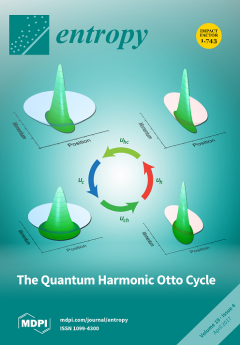Recently
p-adic (and, more generally, ultrametric) spaces representing tree-like networks of percolation, and as a special case of capillary patterns in porous media, started to be used to model the propagation of fluids (e.g., oil, water, oil-in-water, and water-in-oil emulsion). The aim
[...] Read more.
Recently
p-adic (and, more generally, ultrametric) spaces representing tree-like networks of percolation, and as a special case of capillary patterns in porous media, started to be used to model the propagation of fluids (e.g., oil, water, oil-in-water, and water-in-oil emulsion). The aim of this note is to derive
p-adic dynamics described by fractional differential operators (Vladimirov operators) starting with discrete dynamics based on hierarchically-structured interactions between the fluids’ volumes concentrated at different levels of the percolation tree and coming to the multiscale universal topology of the percolating nets. Similar systems of discrete hierarchic equations were widely applied to modeling of turbulence. However, in the present work this similarity is only formal since, in our model, the trees are real physical patterns with a tree-like topology of capillaries (or fractures) in random porous media (not cascade trees, as in the case of turbulence, which we will be discussed elsewhere for the spinner flowmeter commonly used in the petroleum industry). By going to the “continuous limit” (with respect to the
p-adic topology) we represent the dynamics on the tree-like configuration space as an evolutionary nonlinear
p-adic fractional (pseudo-) differential equation, the tree-like analog of the Navier–Stokes equation. We hope that our work helps to come closer to a nonlinear equation solution, taking into account the scaling, hierarchies, and formal derivations, imprinted from the similar properties of the real physical world. Once this coupling is resolved, the more problematic question of information scaling in industrial applications will be achieved.
Full article






